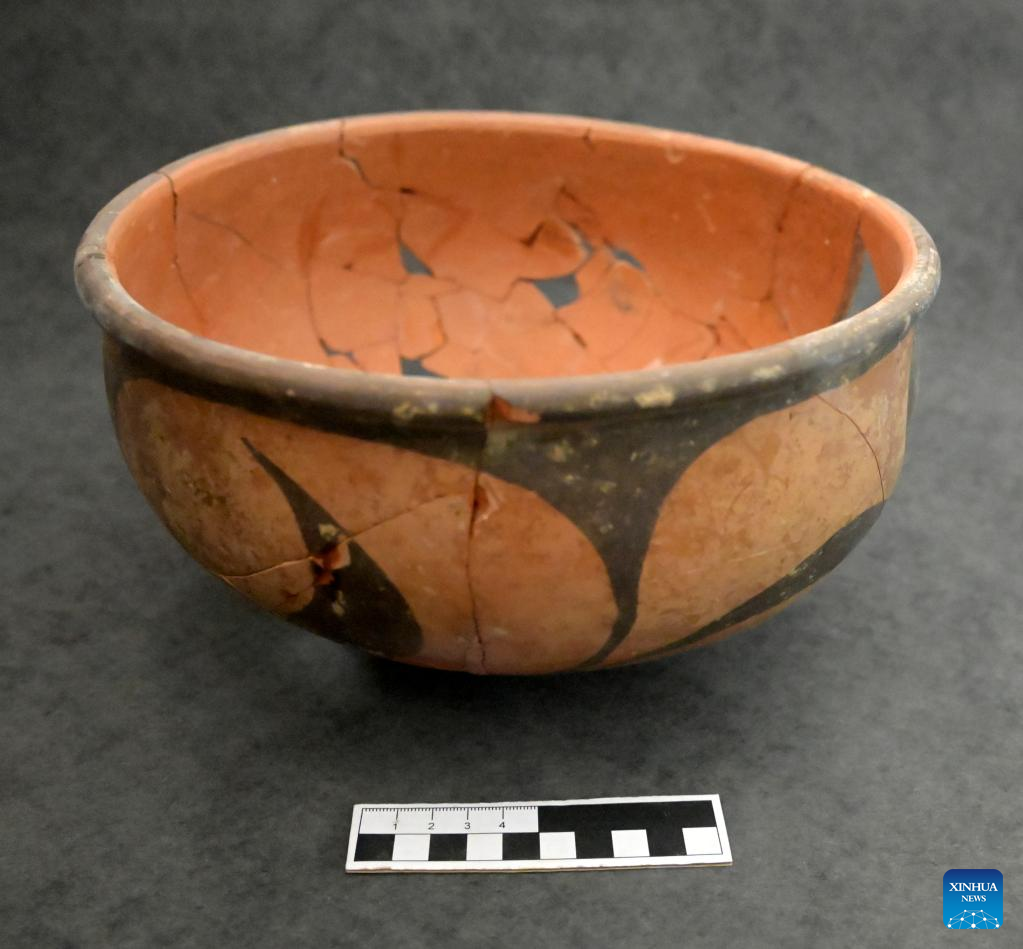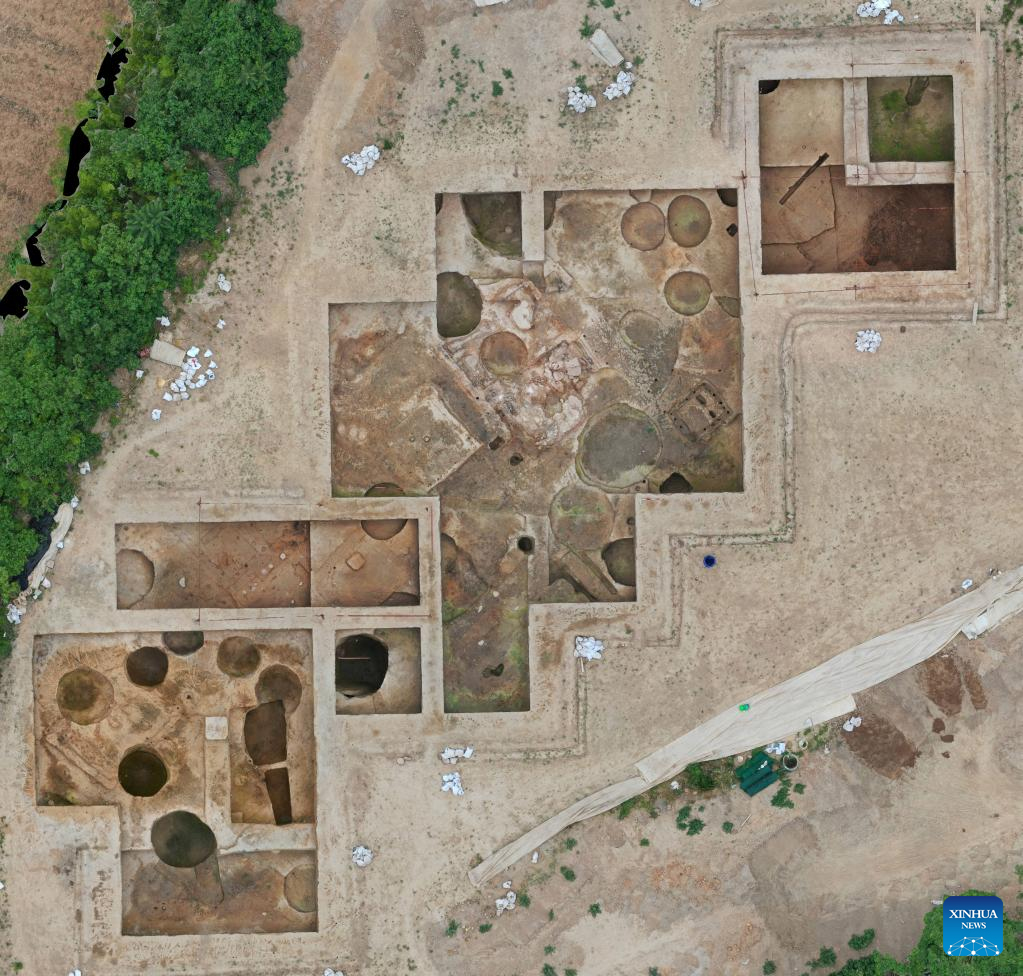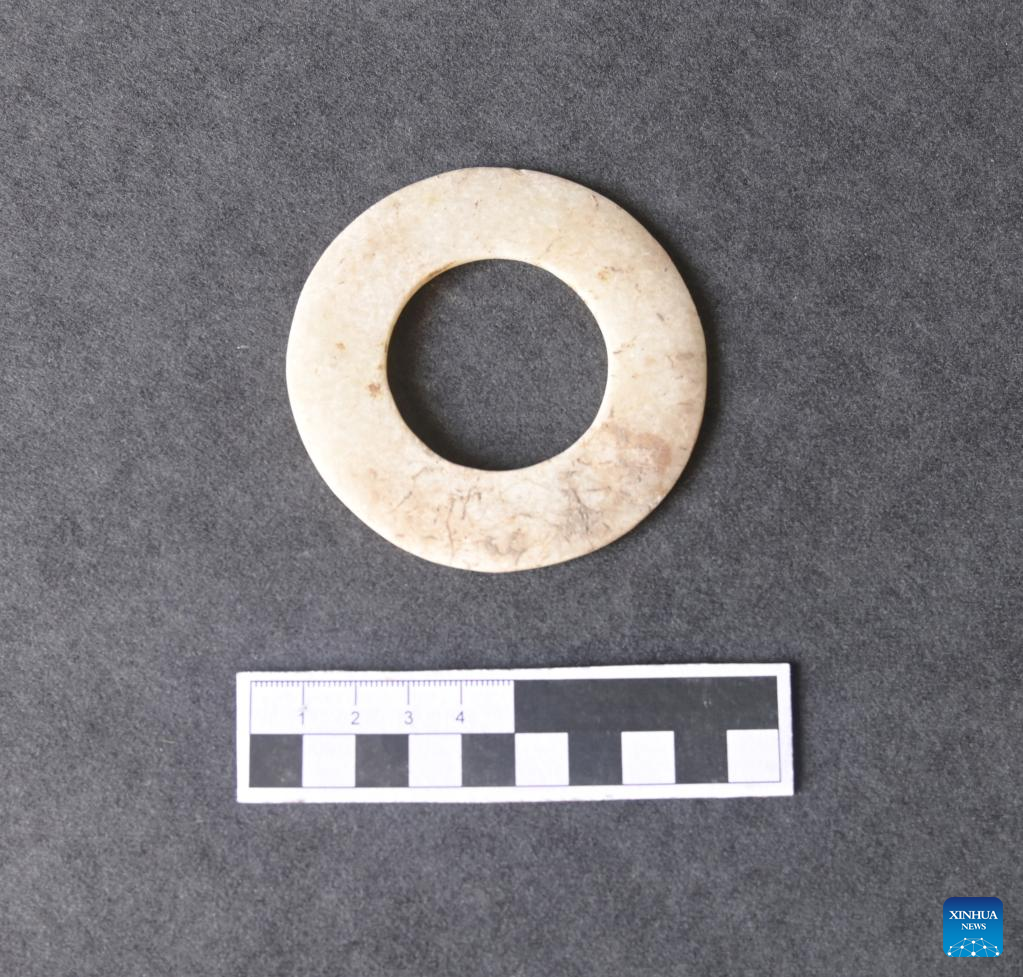
This undated file photo shows a piece of pottery ware excavated at the Suyang relics site in the city of Luoyang, central China's Henan Province. (Xinhua)
ZHENGZHOU, Dec. 29 (Xinhua) -- Archaeologists have found more than 300 tombs dating back around 4,500 years in central China's Henan Province, which are of great significance to studying the burial system and social structure of prehistoric China.
Located in the Suyang relics site in the city of Luoyang, the tomb complex covers an area of about 15,000 square meters, and all of the tombs are earth pits in a rectangular shape, according to the Luoyang Municipal Institute of Archaeology.
"The tomb cluster is large in size and can be traced back to the transition period from Yangshao Culture to Longshan Culture. It is extremely rare to see this in Zhongyuan, a region known as the central plain area," said Ren Guang, head of the excavation project on the Suyang site.
Archaeologists have unearthed nine tombs so far, and the skeletons of 10 people have been found in the tombs. Some of the tombs show evidence of having been seriously damaged by tomb raiders.
Preliminary excavation showed that the tomb complex can be traced back to the early stage of the Longshan Culture, Ren said.
The discovery of the tomb cluster has great academic value, Ren said, adding that it can help researchers better understand the burial system during this period, while also providing important clues for the study of social complexity and the civilization process in the Longshan Culture.
The Suyang relics site spans more than 600,000 square meters. The Luoyang Municipal Institute of Archaeology launched excavation work at the site in early 2021, and it is still in progress. ■

This undated aerial file photo shows the Suyang relics site in the city of Luoyang, central China's Henan Province. (Xinhua)

This undated file photo shows a piece of jade excavated at the Suyang relics site in the city of Luoyang, central China's Henan Province. (Xinhua)



